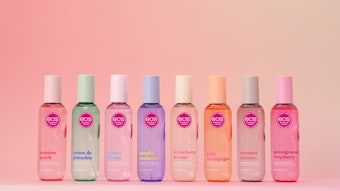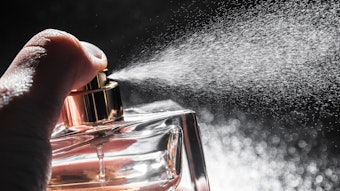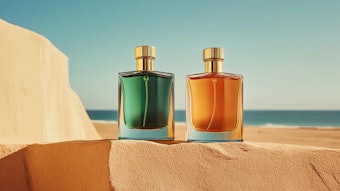
“As we stand at the brink of a second nuclear age and a period of unprecedented climate change,” the Cambridge cosmologist Stephen Hawking recently stated, “scientists have a special responsibility, once again, to inform the public and to advise leaders about the perils that humanity faces.”
With dire predictions such as this and the realities of life, no wonder that there exists an atmosphere of stress and anxiety throughout society. These issues are bigger than a single person can hope to resolve. What’s needed, then, is an individual solution that helps to alleviate stress: a lifestyle of “health and wellness.” Taking individual responsibility for managing one’s own health and opening up to broader issues of life and environmental sustainability characterizes this “conscience consumer” of the new millennium.
Growing concerns with what one is ingesting internally and applying topically are leading consumers to adapt a more holistic approach to personal health and the welfare of the planet. In this atmosphere, natural and organic products are viewed as safe, efficacious and Earthfriendly. Hence, the growth of natural personal care at a rate of 12% over the last five years compared to traditional personal care, which only grew at the rate of 4–5% during the same period. Datamonitor predicts that the market for natural personal care will exceed $1 billion by 2010. In 2002, the Natural Marketing Institute (NMI), reviewing the overall U.S. health and wellness market, came to the conclusion that the LOHAS (lifestyle of health and sustainability) consumer segmentation constituted 63 million adults, a number that has grown considerably in the intervening years.
From Niche to Mainstream
Of course, natural personal care is not a recent phenomenon. Companies such as JASON Natural Cosmetics, Aubrey Organics and Dr. Hauschka have been in business since the 1960s, mostly catering to people with dermatological problems and early ecologically aware consumers (looked upon as “eco” people). More recent growth, however, is unprecedented, reaching 20–25% annually in the first years of the millennium.
Natural personal care is no longer a small niche business. Major multinational consumer goods companies are joining this lucrative field by buying companies with established natural/organic environmentally conscious positioning. L’Oréal acquired The Body Shop; Clarins bought into Kibio, the French organic beauty company; Estée Lauder owns Aveda; and Dr. Hauschka products are now on the shelves of Bath & Body Works.
The opportunities are enormous, but fragrance companies need to be aware that the more prevalent the trend, the more demanding the consumer. Gone are the days when one could call a product “natural” 27 by adding some natural extracts, known as “green dusting” the product. The natural personal care product needs to be truly natural, and that means incorporating a natural fragrance.
What is “Natural”?
There is an understandable level of confusion across the industry as to precisely what constitutes natural and organic. In the United States there are no regulations for calling a product “natural.” The term has not been defined in the FDA regulations or in the Federal Food, Drug and Cosmetic Act. There are national standards regarding use of “organic,” but they do not apply to personal care products.
In fact, the FDA at one point issued a short-lived ban on the use of the “organic” term for personal care. Careful not to betray the trust that consumers place in their products, manufacturers use natural ingredients that fit their own definition and may ask for “natural fragrance” certification from fragrance suppliers. Burt’s Bees, for example, labels all of its products with a bar that depicts the amount of natural materials in a product. Of course, natural certification is based on producers’/vendors’ certification of natural ingredients that go into the manufacture of a finished product. How accurate this standard is depends entirely on the integrity of the producer.
Ideally, such a process seeks to address the natural consumer’s belief system, which states:
• natural personal care products are safer than those that contain synthetics
• natural personal care products will maintain and improve one’s health
• natural products are safer to use in the long term and have fewer severe side effects
It can be persuasively argued that these beliefs reflect an emotional rather than a scientific approach to natural personal care products. The fact remains, though, that emotion leads to action, while logic simply leads to conclusions. Consumers cast their vote by buying natural products, which they feel earn their trust.
The Challenges of Natural Fragrance Formulation
Given that natural personal care products have taken a firm grip on the market and that formulas will move from having some natural ingredients to being “all natural,” it is clear that natural fragrances are not a fad, but rather a steadily growing phenomenon. Natural fragrances create a beautiful aura easily recognizable to consumers. The success of brands like L’Occitane and Lush is to a great extent based on the quality of their natural fragrances. Increasingly, perfumers are facing the task of creating 100% natural fragrances. This seemingly easy task in reality poses quite a few problems. The natural smelling fragrance needs to reflect a perception of naturalness that fits the image of a consumer who is concerned with wellness. Thus, it is not enough to use orange oil for an orangescented product.
The fragrance may need an additional spark of green notes to make it juicier, essential oils that fill the middle notes to add body and, especially today, you always need a sweet nuance. In a conventional fragrance, underscoring sweetness would not be a problem—just a touch of vanillin or ethyl vanillin, heliotropine or coumarin, depending on your creativity and project objectives. This same task is not so easy if the fragrance is all natural (or natural/organic); vanilla absolute and tonka beans are expensive. And, even if you can afford to use them, you will still need to solubilize them using natural solvents or fixed oils such as jojoba, grape seed or almond. A good perfumer can overcome these obstacles only to be faced with an even more rigorous task: creating a natural fruit fragrance.
There is no blueberry essential oil available to make a fragrance smell like blueberries, nor are there grape or raspberry oils. Matching these fruits with a palette of synthetic materials such as methyl anthranilate and raspberry ketone would be achievable, if not easy, for most perfumers. But limiting oneself solely to naturals, this process becomes a true test of creativity. As Lee Castleman, the perfumer with whom I work, says: you need to trust your nose and use materials that exhibit the notes you are looking for as nuances. Look for fruitiness in davana oil or fruity freshness in a combination of citrus and green naturals.
Cost and Regulatory Factors
The last—though definitely not least—point that I would like to make concerns essential oils and their availability. The constant and consistent pressure to lower fragrance costs is driving essential oil suppliers to stretch their stocks. It is therefore difficult to find essential oils that accurately represent the aroma of what the true oil should smell like, whether it is geranium Maroc oil or rose Maroc, rosemary Tunisian (not Spanish) and so forth. The “perfumery grade” 30 has come to mean a lower quality essential oil; one has to go to the P&N (pure and natural) or organic grade to find a great smelling gem.
On the other hand, the prices of essential oils are skyrocketing—how can anyone afford to use sandalwood oil at $1,600 per kilo, or rose absolute at $2,000 per kilo? In a trend that is diametrically opposed to the demand for natural fragrances, some essential oils are starting to disappear from the market (as Berje’s Kim Bleimann recently noted in a speech to the WFFC); juniper berry and rue oils are scarce. And one cannot address this topic without a word about regulations, which add a great deal of difficulty to the natural fragrance creation. The European COLIPA regulation identified 26 potential allergens and requires listing them on the product’s label. At first blush, this doesn’t appear to be such a big issue; however, the natural product manufacturers don’t want to list chemical (INCI) names like linalool and citral on the label of a product that claims to be natural. This alone eliminates a whole range of essential oils from the perfumer’s palette. The fact that the oil is natural doesn’t exempt it from the eagle eyes of COLIPA. Even if the ingredient is a natural constituent of the oil, it needs to be listed.
The complications in working with natural materials are well compensated by the sparkling elegance they impart to fragrances. Wonderful fragrances can be created using only naturals, the way it has been done since perfumery’s dawn. Synthetics, on the other hand, are essential as well—they extend perfumers’ palettes, adding complexity and diversity. The current “greening” culture and socio-economic trends have created very suspicious consumers who want to draw on the forces of nature by using all natural fragrances (whatever that may mean to each individual) and avoiding unnecessary contact with synthetics. In truth, there is room in the marketplace for safe synthetics and naturals, often complementarily blended together in the service of a fantastic fragrance.
Address correspondence to Helen Feygin, Intuiscent, 476 Lincoln Blvd., Middlesex, NJ 08846; [email protected].
For additional P&F articles, click here.










